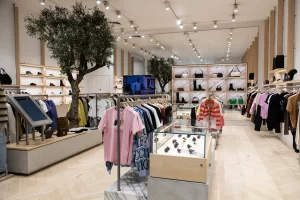A Complete Package About Earings

A Brief History of Earrings

Earrings have been worn as far back as 7,000 years ago in Egypt. While some of the earliest forms were actually made from bones and shells rather than metal, the basic concept was still there – earrings were worn primarily by wealthy women in order to show off their beauty, wealth, and status. The earrings became more common among both sexes in Europe, although men generally wore them only in their left ears.The earliest earrings that have been discovered by archaeologists relate to ancient Sumerian women. This dates them to possibly as far back as 2500 B.C.E. These earrings would typically be gold hoops.
Why do people find earrings attractive?

Earrings are generally used to enhance a person’s appearance.Humans are among many species that use visual attraction to identify possible mates, and some experts believe that earrings are an indicator of wealth and fertility. Another theory is that human ancestors used piercings as a way to show allegiance or leadership within a group.
The type of earrings you wear helps accentuate your beauty and the type of earrings you wear also has an effect on your look and your self-esteem.
Styles can vary, some making you look more feminine, others more so neutral in appearance.
Therefore, you need to choose more dainty or cute pieces.
Reasons of Wearing Earring’s
With the intention of enhancing their beauty:- Most women and girls wear earrings for the purpose of enhancing their beauty. The notion that beauty is an important aspect of a woman’s personality is widely regarded. The right pair of earrings can help your daily style to pop.

Due to some Cultural Ritual:- There are some religious and cultural rituals attached to it. Some wear it out for superstition. Others wear it as a part of cultural it is a matter of custom for ladies to act in a more feminine manner. Married women have to wear earrings or other jewelry to let the world know they’re married.

In order to symbolize status:- Earrings are also worn by women as a sign of prestige. Specially gold or diamond earrings are worn by women with their daily outfits that portray that these women belong to a particular class. A pearl, being very expensive, symbolizes a high social standing. Pearls are traditionally the symbol of a queen that reigns in her kingdom.

Perception Of Earrings
Even with their long history, many perceive earrings as a new fashion trend that was started by Queen Victoria. The Queen began wearing earrings after her husband, Prince Albert, died in 1861. According to reports, she felt lonely without her husband and wore her first pair to remind herself of him. When she arrived at a party shortly after wearing them, women flocked around her asking where they could get a pair. Since then it has been trendy for all women to wear them. They come in every size and shape imaginable and are great accents to every outfit whether you wear them alone or in sets like multiple studs or hoops together.
There are many perceptions about earrings but historically they have been around much longer than people believe. They can be traced back to over 6,000 years ago in India, where earrings were placed on statues and even mummified bodies. They are often used as a form of adornment or to show allegiance or lineage. In England in 600AD it was law that all earrings had to be made out of gold due to their high cost which shows how valuable they were at that time. The most expensive pair ever created were diamond studded hoops worn by Princess Diana during her wedding which went for $280,000 dollars!
Cognition about Earrings
Human history is rife with examples of body ornamentation. Anthropologists suspect that Homo sapiens and Neanderthals may have decorated themselves as early as 100,000 years ago, though we don’t know for sure. The first written record of earrings dates back to 2900 BC in Sumeria, where earrings were made from lapis lazuli, a semiprecious stone that was brought from Afghanistan. In ancient Egypt, jewelry played an important role in how people were viewed by society; men and women wore gold earrings to denote wealth, but poor folks might only wear copper or wood earrings.
One reason earrings became so popular was that they were considered an alternative to having one’s ears pierced. It wasn’t until Queen Victoria wore earrings in 1850 that piercing became more common among European women, and soon American women started emulating her look. In 1898, Eleanora Duse made them trendy by wearing plain gold loop earrings on stage during a performance of Hamlet, and since then many notable people have worn them: Cleopatra used gold drops in her ears as a fashion statement (as well as a way to use up leftover gems from her jewelry collection), while 19th century actress Sarah Bernhardt used silk thread for cheaper versions.
Attention about Earrings
In ancient times, ears were pierced with a large needle and earrings inserted without any pain killers. The holes created by these practices left unsightly depressions on the earlobes. As such, various methods have been invented to keep earlobes from healing into unnatural shapes: sticking on jewellery using beeswax (as described in Aristophanes’ play Lysistrata) or resin to affix hanging rings; placing heavy objects on top of piercings to hold them open; and several other innovative methods.
The first use of primitive safety pins has also been cited as a method used by Roman women to prevent their earrings from causing injury while they slept.
There is a type of orientation attention that directs itself toward stimuli that appear to be novel or odd. It also has a bias toward noticing stimuli in one’s current field of view (that is, one’s attentional window). While it can be evoked by external cues, it is more commonly brought about internally by sudden changes in an organism’s environment. The orienting response also slows heart rate and lowers skin resistance, as well as making our eyes move rapidly toward a perceived stimulus. In addition, activating muscles close to our ears increases their sensitivity; we turn our heads to hear better in direction of arousing noises or activities.





